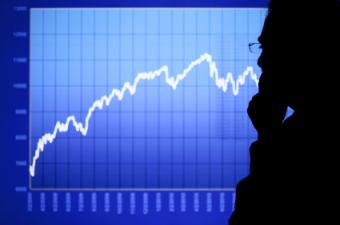The U.S. economy grew at a disappointing 1.5 percent in the second quarter, the ""Labor Department"":http://www.dol.gov/ reported Friday, down from an upwardly revised 2.0 percent growth rate in the first quarter but better than expected.
[IMAGE]Economists had forecast GDP to grow at 1.2 percent in the second quarter. A drop in government spending ├â┬ó├óÔÇÜ┬¼├óÔé¼┼ô primarily at the state and local level ├â┬ó├óÔÇÜ┬¼├óÔé¼┼ô held growth down.
The growth pace is below the 3.0 percent level need to add jobs to make a dent in the nation's unemployment rate.
Indeed the GDP report covered the same quarter which saw the weakest job growth ├â┬ó├óÔÇÜ┬¼├óÔé¼┼ô 225,000 jobs ├â┬ó├óÔÇÜ┬¼├óÔé¼┼ô since the third quarter of 2010 when the economy grew at a relatively robust 2.5 percent.
Friday's Labor report was an ├â┬ó├óÔÇÜ┬¼├àÔÇ£advance estimate├â┬ó├óÔÇÜ┬¼├é┬Ø based on incomplete data subject to revision or
in some cases data that has not yet been reported.
The Labor Department also released the regular annual revisions to GDP for the previous three years, from the end of 2008.
Those revisions showed a steeper plunge in the first half of 2009 than previously reported but also stronger growth in the first half of 2010 than first calculated.
Data for 2011 were generally mixed compared with initial reports: stronger than first reported in the second and fourth quarters but weaker in the first and third.
Between 2008 and 2011, real GDP increased at an average annual rate of 0.3 percent, Labor said.
While in the previously published estimates, real GDP had increased at an average annual rate of 0.4 percent.
[COLUMN_BREAK]From the fourth quarter of 2008 to the first quarter of 2012, real GDP increased at an average annual rate of 1.5 percent slightly faster than the previously published estimates which pegged real GDP growth at 1.4 percent.
In dollar terms, GDP increased $107.6 billion, most of which - $60.3 billion - was an increase in personal consumption.
The second quarter increase in personal consumption though was less than half the $133.4 billion growth in the first quarter.
Government spending at all levels fell $6.2 billion in the second quarter compared with a $3.6 billion increase in the first.
State and local government spending dropped $8.7 billion in the second quarter offset by a $2.5 increase in federal spending.
The slowdown in total growth was due to a combination of factors: real personal consumption grew at just 1.5 percent in the second quarter compared with 2.4 percent in the first.
Non-residential fixed investment grew at 5.3 percent in the second quarter compared with 7.5 percent in the first.
Residential fixed investment grew 9.7 percent in the second quarter after growing at 20.5 percent in the first.
Released less than a month after the end of the quarter, this advance estimate of GDP relied on estimates and assumptions of some key data elements which, Labor said, ├â┬ó├óÔÇÜ┬¼├àÔÇ£are incomplete and subject to revision.├â┬ó├óÔÇÜ┬¼├é┬Ø
Labor assumed, for example, a stronger pace of residential construction for June than for April and May as well as a drop in non-durable manufacturing inventories, an increase in automobile inventories and decreases in both exports and imports.
Personal consumption represented 71.0 percent of total GDP in the second quarter compared with 71.1 percent in the first.
Inflation according to the GDP price index increased to a 1.9 percent annualized rate from 1.8 percent in the first quarter.
Core inflation ├â┬ó├óÔÇÜ┬¼├óÔé¼┼ô excluding food and energy prices ├â┬ó├óÔÇÜ┬¼├óÔé¼┼ô dropped to 1.8 percent in the second quarter from 1.9 percent in the first.
Labor issues three GDP reports for each quarter: an ├â┬ó├óÔÇÜ┬¼├àÔÇ£advance├â┬ó├óÔÇÜ┬¼├é┬Ø report one month after the quarter ends and revisions in each of the following months as more data are received.

 theMReport.com Your trusted source for mortgage banking news
theMReport.com Your trusted source for mortgage banking news









